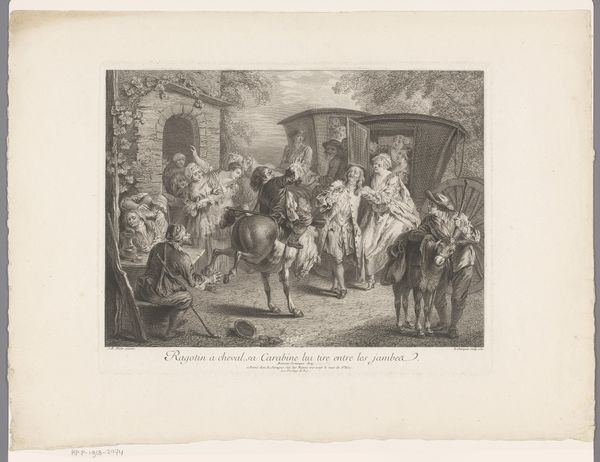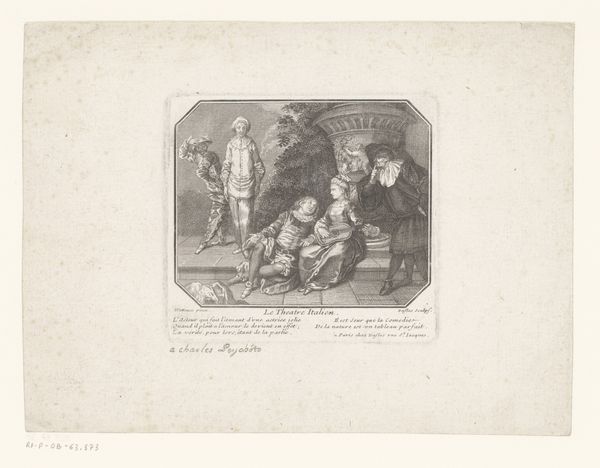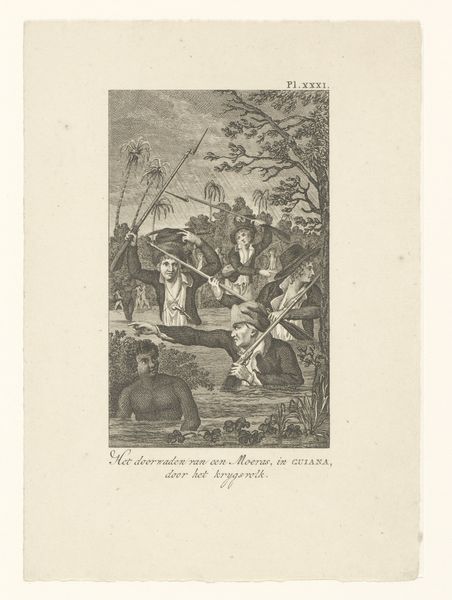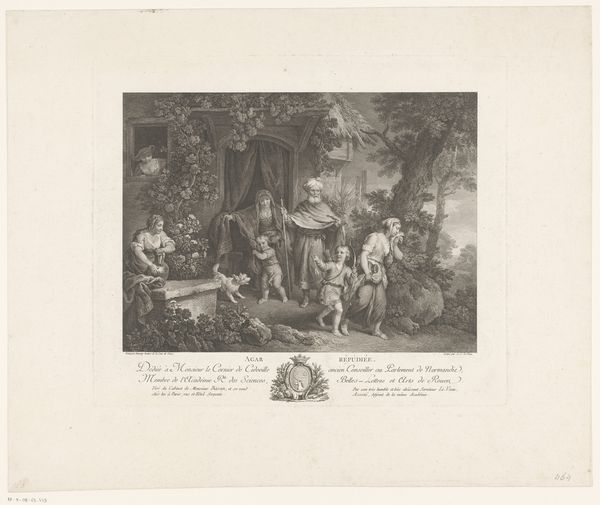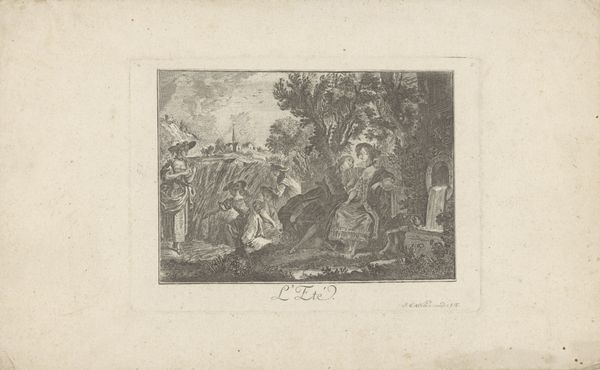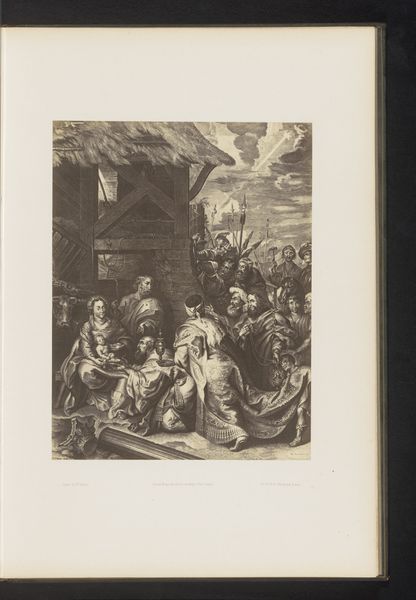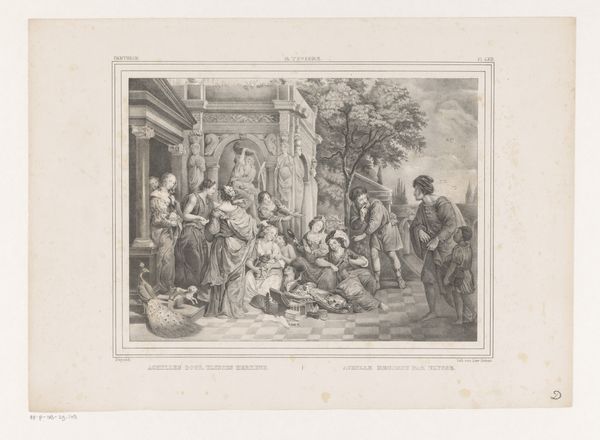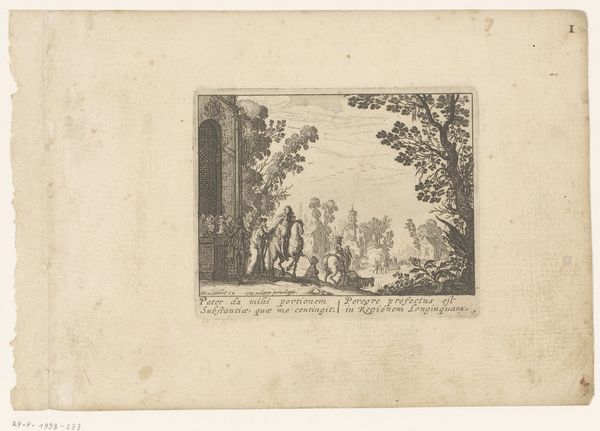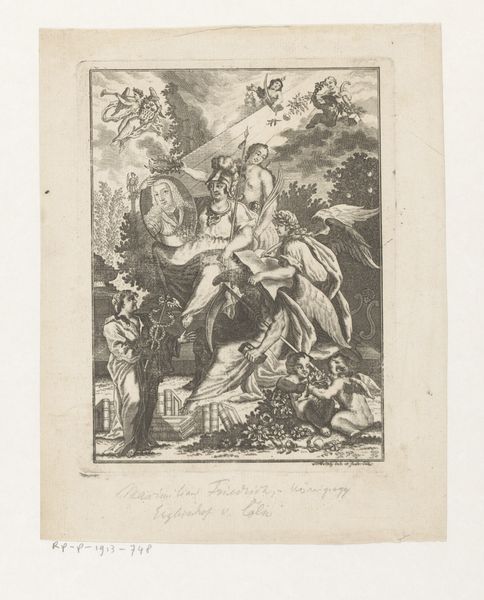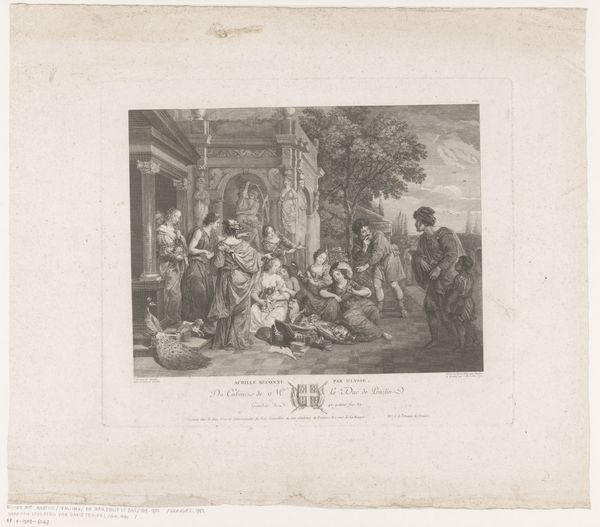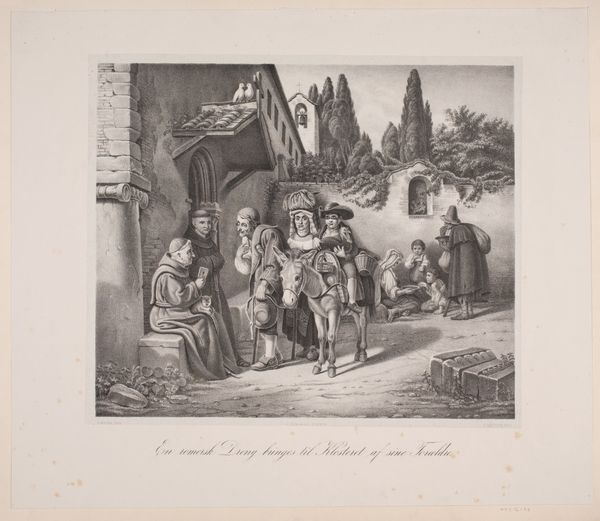
Allegorisk blad med den drukne Silen og andre mytologiske og allegoriske figurer ved en sarkofag med indskriften: "Sepulcrum pudicitiae mortae" 1720 - 1751
0:00
0:00
drawing, ink
#
drawing
#
allegory
#
baroque
#
pen drawing
#
figuration
#
ink
#
history-painting
Dimensions: 124 mm (height) x 150 mm (width) (bladmaal)
Editor: Here we have Marcus Tuscher’s pen and ink drawing, titled “Allegorical sheet with the drunken Silenus and other mythological and allegorical figures by a sarcophagus with the inscription: 'Sepulcrum pudicitiae mortae'," made sometime between 1720 and 1751. I am really struck by the detail achieved with just pen and ink. It's such an elaborate scene, almost like a stage production. What stands out to you about it? Curator: For me, this piece is really compelling if we consider the materials and their circulation. Ink, paper— these were commodities, and their accessibility shaped artistic production. Look at the inscription on the sarcophagus; consider this piece’s audience: who was literate? Who had access to mythological knowledge? How would its meaning be consumed? Editor: That's fascinating! So, you're saying that the availability of these materials would affect not only the physical creation but also the content and who it was created for. Curator: Precisely! We also must remember that labor plays into this, from the paper-making process to the creation of ink. Someone had to produce those raw materials, which enabled Tuscher’s drawings and its potential messages. Did the engraver believe in the allegory they helped produce, or were they paid laborers? This piece speaks volumes about the intersection of material culture, labor, and the dissemination of ideas in the 18th century. How does that idea shift your perception of the art? Editor: That totally reframes it for me. I hadn't considered how the means of production could be as important as the message of the artwork. Thanks! Curator: Absolutely. And it makes us wonder how current materials might influence the message being put out by current day artists.
Comments
No comments
Be the first to comment and join the conversation on the ultimate creative platform.
